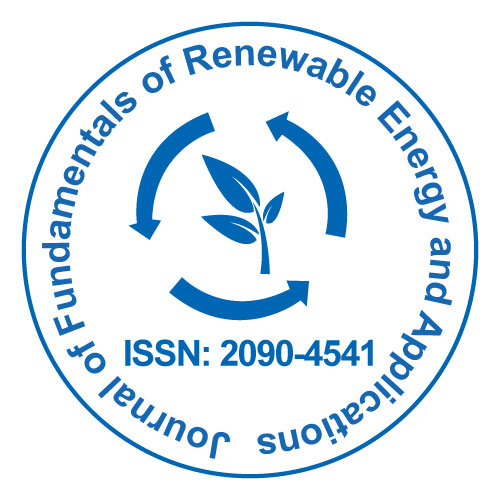
Journal of Fundamentals of Renewable Energy and Applications
Open Access
ISSN: 2090-4541
+44 1300 500008

ISSN: 2090-4541
+44 1300 500008
Commentary - (2023)Volume 13, Issue 3
When compared to chemical synthetic reactions, bioconversions are typically low productivity processes. This disadvantage is linked to the low solubility of many organic substrates in aqueous solutions, as well as inhibition phenomena towards biocatalysts, which necessitates the use of bioconversion media with low substrate and product concentrations.
A bioconversion's productivity can be maximised if it is performed in the presence of substrate/product concentrations at which the biocatalyst exhibits optimum activity and stability. One approach is to create a method that involves continuous addition of the substrate and selective removal of the product. For example, by combining liquid/liquid extraction and membrane permeation, an effective extractive microbial bioconversion can be established. Solvent extraction takes advantage of differences in component partitioning between two immiscible solvents, while inserting a suitable membrane stops contact between the biocatalyst and the extractant.
A freshly isolated Gluconobacter oxydans strain has recently been reported to oxidise isoamyl alcohol to isovaleraldehyde. In batch mode, high conversion yields (>90%) and good rates (maximum yield after 90 minutes) were achieved. Although aldehyde dehydrogenase(s) leading to acid formation are present in this strain, further oxidation of the aldehyde to acid is considerably slower, allowing for transient accumulation of the aldehyde. These findings were satisfactory, but relatively low substrate concentrations (5 g L-1) were used because higher concentrations inhibited microorganism activity due to substrate inhibition. Evaporation also lost a substantial amount of the aldehyde due to its high volatility.
The output of this bioconversion can be increased by establishing a continuous process with substrate addition at an appropriate flow rate. Nonetheless, in situ removal of the aldehyde is critical not only to prevent acid production but also to reduce product evaporation. The goal of this research was to evaluate a membrane based extractive procedure for in situ, non-dispersive aldehyde recovery. The constant extractive bioconversion was carried out in a hydrophobic hollow fibre membrane reactor.
Bioconversion of toxic organic wastes with the help of invertebrates
Bioconversion of solid organic wastes into value added products is a viable and low-cost waste management alternative. Solid organic wastes comprising contaminants, such as bio-solids, animal manures, food wastes, and crop residues, pose a challenge to the biological decomposition process and the environmental safety of the resulting compost. Insect larvae have recently emerged as a viable method for decomposing hazardous organic residues, including plastic waste.
We investigate and contrast the impacts of vermicomposting and insect based bioconversion on heavy metal removal, legacy and emerging organic pollutants, and pathogens, including antibiotic-resistant genes. The ultimate goal of using vermicomposting and insect based bioconversion as bio-economy alternatives for hazardous organic waste management is to produce pollutant free or nontoxic composts.
In addition, the incorporation of biochar (carbonaceous material produced by the pyrolysis of biomass) into these biotransformation processes accelerates the decomposition of organic matter and enhances the quality of the resulting carbonaceous-rich composts as fertilizers. Both biotechnologies are thought to be nature-based remedies for at least three major soil threats: Soil organic matter decline, contamination, and soil biodiversity loss.
Citation: Luther M (2023) Bioconversion of Waste Management and Hazardous Organic Wastes Using Invertebrates. J Fundam Renewable Energy App. 13:317.
Received: 06-Apr-2023, Manuscript No. JFRA-23-23330; Editor assigned: 10-Apr-2023, Pre QC No. JFRA-23-23330 (PQ); Reviewed: 24-Apr-2023, QC No. JFRA-23-23330; Revised: 13-Jun-2023, Manuscript No. JFRA-23-23330 (R); Published: 20-Jun-2023 , DOI: 10.35248/2090-4541.23.13.317
Copyright: © 2023 Luther M. This is an open-access article distributed under the terms of the Creative Commons Attribution License, which permits unrestricted use, distribution, and reproduction in any medium, provided the original author and source are credited.